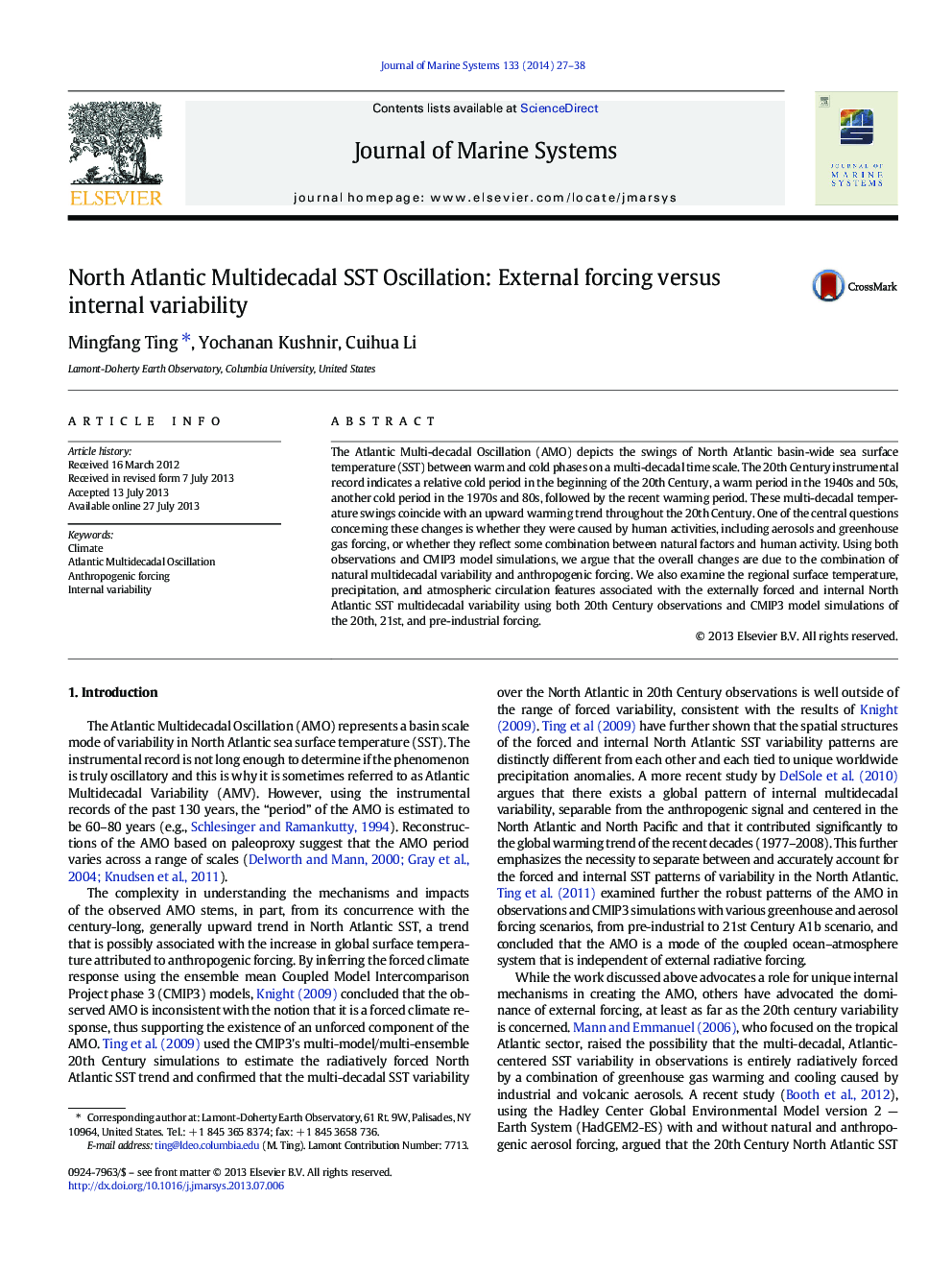| Article ID | Journal | Published Year | Pages | File Type |
|---|---|---|---|---|
| 6387001 | Journal of Marine Systems | 2014 | 12 Pages |
â¢There are distinctive modes of forced and internal AMO.â¢Climate models support the observed spatial structure of AMO.â¢There are worldwide precipitation and atmospheric circulation impacts due to forced and internal AMO.â¢AMO structures in the tropics and subtropics consistent with positive coupled ocean-atmosphere interaction.
The Atlantic Multi-decadal Oscillation (AMO) depicts the swings of North Atlantic basin-wide sea surface temperature (SST) between warm and cold phases on a multi-decadal time scale. The 20th Century instrumental record indicates a relative cold period in the beginning of the 20th Century, a warm period in the 1940s and 50s, another cold period in the 1970s and 80s, followed by the recent warming period. These multi-decadal temperature swings coincide with an upward warming trend throughout the 20th Century. One of the central questions concerning these changes is whether they were caused by human activities, including aerosols and greenhouse gas forcing, or whether they reflect some combination between natural factors and human activity. Using both observations and CMIP3 model simulations, we argue that the overall changes are due to the combination of natural multidecadal variability and anthropogenic forcing. We also examine the regional surface temperature, precipitation, and atmospheric circulation features associated with the externally forced and internal North Atlantic SST multidecadal variability using both 20th Century observations and CMIP3 model simulations of the 20th, 21st, and pre-industrial forcing.
